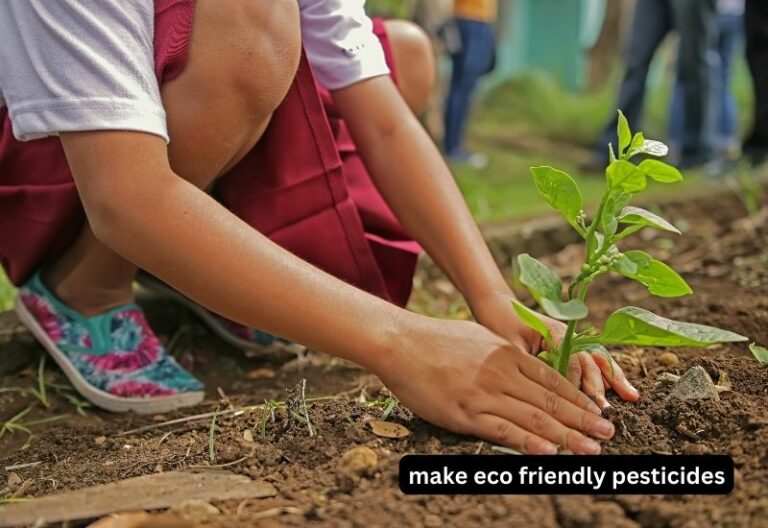how to make eco friendly hand sanitizer
Here we will discuss how to make eco friendly hand sanitizer. In the wake of the pandemic, it has become increasingly important to ensure that your hands are clean and sanitized. But if you’re looking for an eco-friendly alternative to store-bought hand sanitizer, this article is for you.
Eco Friendly Hand Sanitizer Ingredients:
The most important ingredient in any homemade hand sanitizer is ethyl alcohol or ethanol. Ethanol should be at least 60% of the solution for it to be effective against germs. You can find ethanol at most pharmacies or drug stores, as well as online. You’ll also need aloe vera gel and essential oils like lavender or tea tree oil. Additionally, you may need an emulsifier such as polysorbate 20 if your mixture doesn’t seem thick enough.
Eco-Friendly Storage Solutions:
Once your hand sanitizer is made, it’s important to store it properly so that it lasts for as long as possible without losing its efficacy. The best way to do this is by using eco-friendly containers such as glass bottles with pump tops or aluminum tins that can be refilled over and over again. This way you can reduce plastic waste while still making sure your hand sanitizer stays fresh and effective!
how to make eco friendly hand sanitizer:
- What You’ll Need
To make your own eco friendly hand sanitizer, you’ll need aloe vera gel, witch hazel, essential oils, and a glass bottle. - Aloe Vera Gel
Aloe vera gel is a natural ingredient that has numerous benefits for the skin. It is known to soothe and moisturize the skin, and it can also help to heal cuts and burns. - Witch Hazel
Witch hazel is another natural ingredient that has many benefits for the skin. It is an astringent, which means that it can help to tighten pores and remove excess oil from the skin. Additionally, witch hazel is a natural anti-inflammatory, which can help to reduce redness and swelling. - Essential Oils
Essential oils are concentrated extracts from plants that contain the plant’s aromatic compounds. These compounds can provide numerous benefits when applied to the skin, such as reducing inflammation and stimulating cell regeneration. - Glass Bottle
It’s important to use a glass bottle for your hand sanitizer, as plastic bottles can leach chemicals into the product over time.
Making the Sanitizer:
Once you have all of your ingredients, the process is quite simple! Just mix together two parts ethanol with one part aloe vera gel until you get a creamy texture. For every eight ounces of liquid, add five drops of essential oil for a pleasant scent and optional antibacterial properties. If your mixture is too thin, add a few drops of polysorbate 20 until it reaches the desired thickness. Then pour the mixture into containers and let them sit overnight before using!
eco friendly hand sanitizer packaging:
- Stainless steel bottles – Stainless steel bottles are another great option for eco friendly hand sanitizer packaging as they are also reusable and 100% recyclable. Stainless steel is a durable material that will not break down over time like some plastics can.
- Bamboo bottles – Bamboo bottles are a great eco friendly option as they are biodegradable and can be composted after use. Bamboo is also a sustainable resource that grows quickly, making it a more environmentally friendly choice than plastic or glass.
- Recycled plastic bottles – Recycled plastic bottles are a great way to reduce your environmental impact as they are made from recycled materials that would otherwise end up in landfill. Additionally, recycling plastic reduces the need for new plastic to be produced, which saves energy and resources.
- Paperboard boxes – Paperboard boxes are a great eco friendly packaging option as they are made from recycled paper and are 100% recyclable. Paperboard is also a lightweight material that requires less energy to transport than heavier options such as glass or metal.
5 benefits of using eco-friendly hand sanitizers:
Fewer Pesticides:
One Of The Primary Benefits Of Using Eco-Friendly Hand Sanitizers Is That They Contain Fewer Pesticides. Pesticides Are Chemicals That Are Used To Kill Insects Or Other Organisms That May Harm Crops. While Pesticides Can Help To Increase Crop Yields, They Can Also Be Harmful To Human Health. Numerous Studies Have Linked Exposure To Pesticides To A Variety Of Health Problems, Including Cancer, Reproductive Issues, And Neurological Problems.
More Nutritious:
Eco-friendly hand sanitizers have also been shown to be more nutritious than non-organic hand sanitizers. A study published in the British Journal of Nutrition found that organic fruits and vegetables contain higher levels of vitamins and minerals than their non-organic counterparts. The study also found that organic foods contain higher levels of antioxidants, which are beneficial compounds that can help to protect the body against disease.
Better for the Environment:
Eco-friendly farming practices are also better for the environment than traditional farming practices. Eco-friendly farmers use methods such as crop rotation and cover crops to improve soil health, which helps to reduce water pollution and soil erosion. Additionally, organic farmers often use less energy than conventional farmers as they do not rely on synthetic fertilizers or pesticides, which require a great deal of energy to produce.
No Genetically Modified Organisms:
Another benefit of using eco-friendly hand sanitizers is that they do not contain genetically modified organisms (GMOs). GMOs are plants or animals that have been created through genetic engineering, a process in which genes from one organism are inserted into another organism in order to create a new variety with desired traits. Some people believe that consuming GMOs may be harmful to human health, as there is currently no long-term data on the safety of consuming them.
Animals Are Treated Better:
Eco-friendly standards also require that animals be treated better than those raised on conventional farms. For example, organic chickens must have access to the outdoors, while those raised on conventional farms typically do not. Organic cows must also be fed a diet that is free from growth hormones and antibiotics
faqs for how to make eco friendly hand sanitizer:
Conclusion:
Making your own eco-friendly hand sanitizer can save you money while also reducing plastic waste in the environment in comparison to traditional store bought hand sanitizing products! It’s easy to make your own DIY version with just a few basic ingredients that you can find easily online or at most drug stores. With some simple mixing instructions outlined in this blog post, you’ll have homemade eco-friendly hand sanitizers ready within no time! Now go forth and start making yours today!



